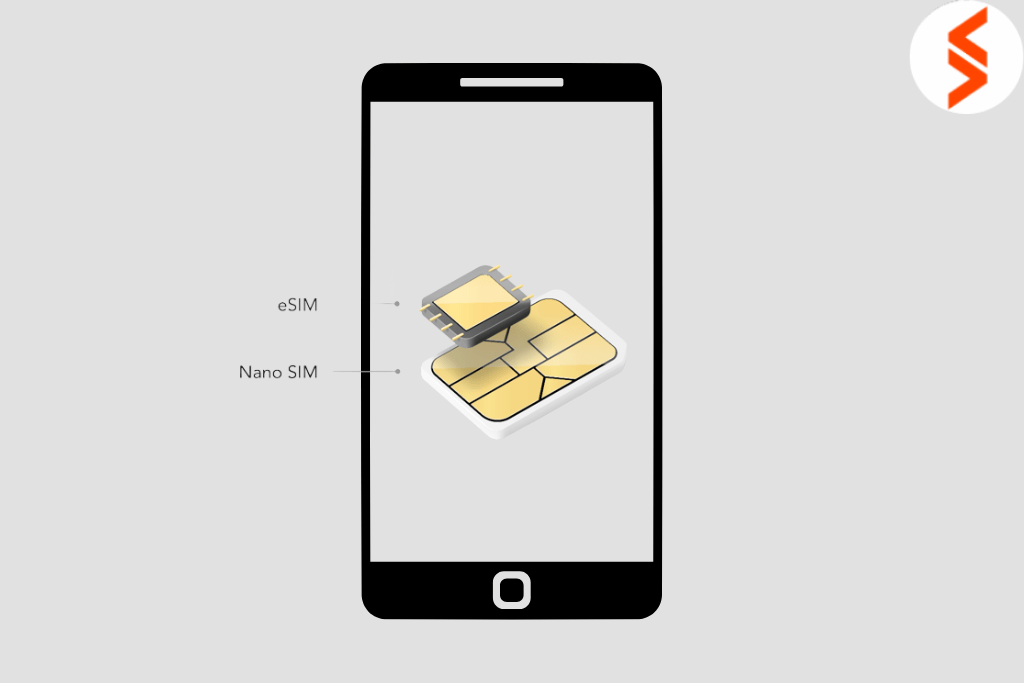
Enterprises worldwide are adopting digital technology to manage work efficiently and offer better connectivity. The COVID-19 pandemic has forced almost all organizations to implement remote work facilities for their employees. Providing flexibility to work from home has resulted in improved performance, and many organizations are willing to continue with this updated enterprise mobility policy even after the pandemic passes. This article covers how eSIM for enterprise and Bring Your Own Device (BYOD) mobility policy complement each other.
The GSMA, the mobile operators’ association, produced a global eSIM specification – the digital version of the SIM – that enables remote provisioning of a SIM profile to any mobile device. With eSIM, consumers can store multiple SIM profiles on their device and easily switch between them. Juniper Research has recently published a study estimating that the 1.2bn eSIM enabled devices in 2021 will increase to 3.4bn by 2025.
What is eSIM?
- The GSMA defines eSIM as the embedded universal integrated circuit card (eUICC).
- It is hard-wired into the device and eliminates the need for removeable SIM cards (although some countries are a way behind optimal utilization of eSIM).
- eSIM enables the ability to remotely program the embedded chip.
- It also helps in environmental challenges like high humidity and temperature, water-resistance and vibration.
- Flexibility and seamless global connectivity are primary benefits of eSIM for enterprise.
- eSIM consumers can access national and international mobile services, business and personal lines on the same device by choosing a new local communication service provider and activating a new subscription whenever needed.
What is BYOD?
- BYOD allows employees to use their personal and company-sanctioned devices such as smartphones, laptops, or tablets at work. It allows people to select the device that works best for them and not be bound by a one-size-fits-all corporate policy.
- Companies often opt for BYOD as a cost saving measure but pitch it more as a flexibility option for the employees. However, hidden admin costs need to be managed.
- BYOD enterprise mobility policy is increasingly common. Mobile operators are noticing the trend and have begun offering SIM-only plans with discounts as the operator is not subsidizing the device.
- The BYOD market is set to hit $430 billion by 2025, moving up from $186 billion in 2019, says MarketWatch.
How is eSIM helpful to enterprises?
eSIM for enterprise allows companies to quickly update employee devices even when employees are working remotely. No more waiting to have a SIM shipped; employees can now receive an updated SIM or roaming profile in seconds no matter if they’re in the office, at home or abroad on business.
The ability to have multiple operator profiles on the phone allows enterprises to competitively bid for roaming services rather than being relying on the home operator’s pricing or forcing employees to get a SIM once they land in a foreign country. eSIM also eliminates the need for the enterprise to store, manage and distribute physical SIM card inventory. Once a plan is purchased, the employee will automatically receive the eSIM QR code in an email/message or the eSIM will be pushed to the device with MDM software.
Digitalization is bringing transformation across many business processes, from procurement to payment. Using eSIM, enterprises can better control digital activation, procurement and payments. It is projected that, by 2024, eSIM will represent about 40% of the installed base of devices in enterprises. Future enterprises will need to have an adaptive business phone stack to keep pace with business needs and calibrating services to balance cost and quality.
How do eSIM and BYOD combine to add value
eSIM and BYOD complement each other by streamlining processes between enterprise and employees. A distributed workforce demands remote service management with better (and more affordable) mobile connectivity. The remote management of devices with MDM software is common with BYOD and eSIM facilitates this distant administration need for connectivity. It also makes the employee on- and off-boarding process easy.
eSIM eases the aggregation of telecom services which eliminates the need for multiple contracts and negotiations in mobile procurement. With a business eSIM enabled on BYOD devices, procurement for services such as data, voice, SMS from multiple operators will be more straightforward. eSIM for enterprise also makes international usage easier to manage and cheaper to procure. Manual workflows and siloed data will be reduced with integrated service providers and enterprise systems.
How does iSimplexity maximize the value of eSIM for enterprise and BYOD?
iSimplexity provides a web-based Telecom Expense Management (TEM) system (SaaS – Software as a Service) for the full range of TEM services that any business – large or small – may need. We provide a procure-to-pay platform and service management for business mobile services using both traditional SIM cards and eSIM, simplifying enterprise mobility.
If your business is in the USA, you can also take advantage of our integrated business mobile service marketplace featuring all 3 major national mobile networks and international service provider options. The marketplace provides deep integrations with network operators to enable provisioning, user service administration and near-real-time usage and cost monitoring, alerts and reporting. Overused or unused services can be quickly detected and managed.
With iSimplexity eSIM (and/or standard SIM) may be used to administer and automate the BYOD mobility policy:
- With our simple interface, import and manage users (employees) and related telecom expenses from any provider globally.
- Aggregated billing and extensive reporting increase the visibility and control of mobility costs and employee administration.
- Readily integrate with core business systems and tools.
- With our marketplace you have a mix & match choice of service provider and plans by employee need (rather than one-sizing).
- Automatic recalibration of user plans based on historical usage patterns and projected usage to continuously and proactively manage costs.
- Commitment to ensuring the lowest cost, best quality balance based on your enterprise connectivity policy and preferences.
- Optional Managed Services to enable you to focus on core business goals.
Contact us for more information.






